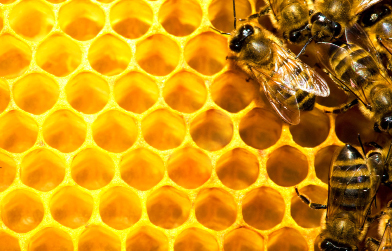Module 4
1. Module 4
Module 4: Area
Module 4 Introduction

© Tischenko Irina/shutterstock
Honeybees are master designers. Mathematicians have proven that the hexagonal pattern on the comb is the best way of dividing up a region into cells of equal area. The amount of wax required and the energy expended by the workers are kept to a minimum. The cells are all the same size. There are approximately four cells per square centimetre or 25 cells per square inch.
Architects too must consider if their building designs make the best use of area while minimizing costs. When you modify your project design, area and materials will be an important consideration.
In this module you will explore estimating areas and using those estimates to check whether your answers to area problems are reasonable. Some of the problem situations you will meet in this module involve areas of two-dimensional shapes, such as squares, rectangles, parallelograms, trapezoids, and circles. As well, you will explore the surface area of prisms, pyramids, cylinders, and cones. You will also investigate how changing the scale or dimensions of geometric shapes affects their areas.
In this module you will further develop your skills as you actively investigate the following questions:
- How do you estimate and calculate the area of two-dimensional shapes and the surface area of three-dimensional objects?
- What effect does a change to dimensions have on area and surface area?
Save a copy of the Module 4 Glossary in your course folder now. The Module 4 Glossary is a list of all of the new terms you will see in the lessons. Each time you see a definition, open your copy of the Glossary. Use the space available to add notes or drawings to help your understanding. You will be able to use your personal Glossary as a study tool.